



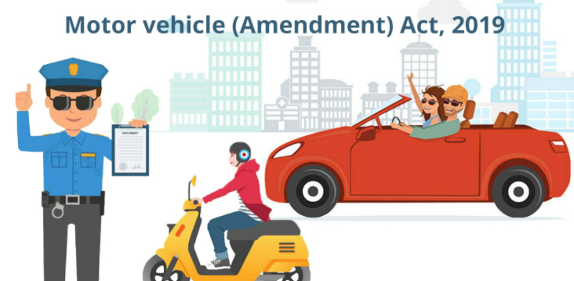

Disclaimer: Copyright infringement not intended.
Context
What is Motor Vehicle Act?
Motor Vehicle Act 2019
Offences covered under Motor Vehicle Act 2019
Under the new Motor Vehicle Act 2019, the penalties for almost all driving errors have gone up significantly, especially if you consider serious offences like those of drunk driving.
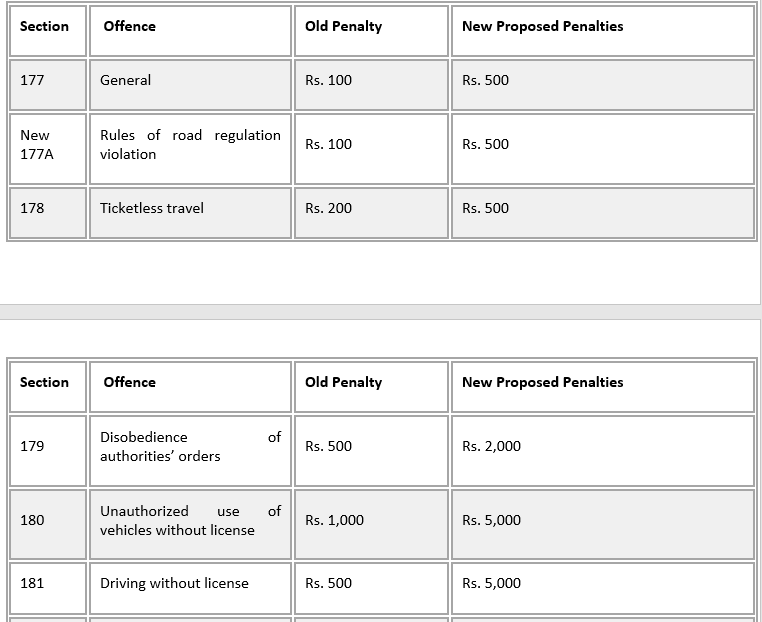
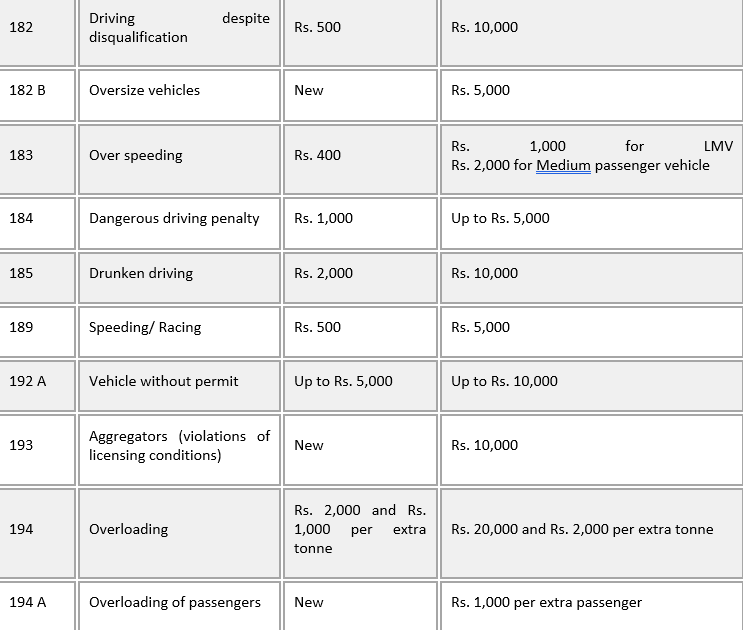
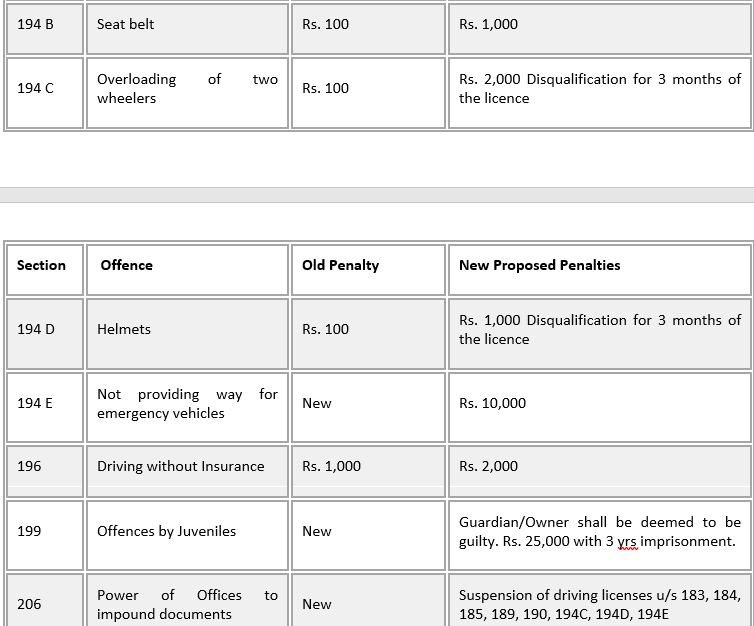

Revised Penalties
New penalty amounts under Motor Vehicles Amendment Act, 2019
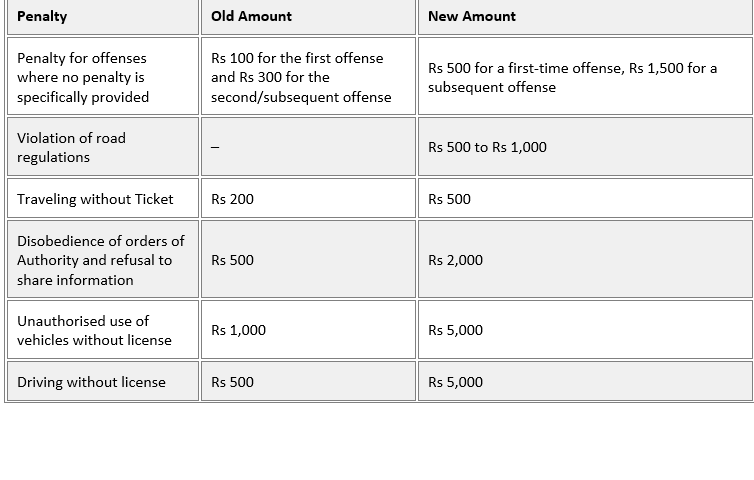
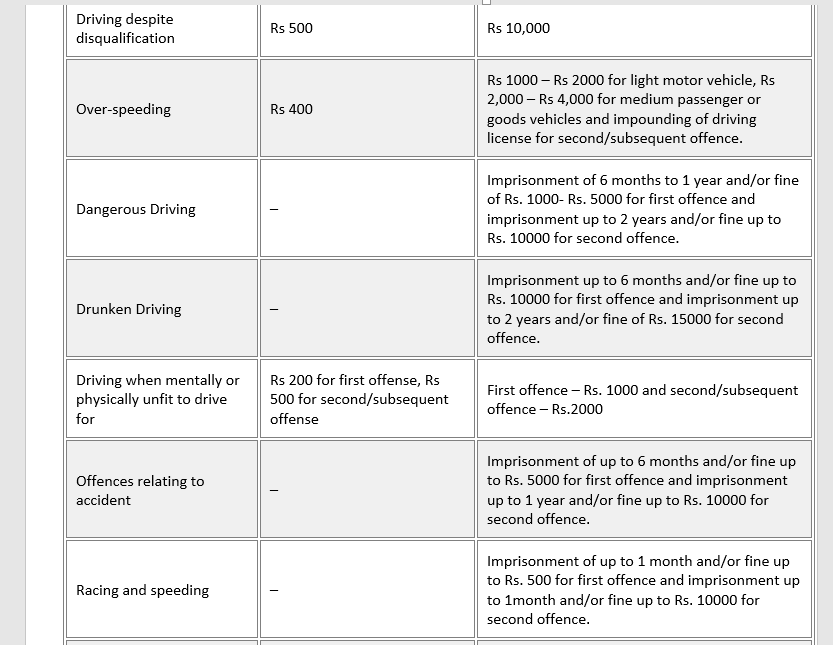

Vehicle Fitness
The Act mandates automated fitness testing for vehicles. This would reduce corruption in the transport department while improving the road worthiness of the vehicle. Penalty has been provided for deliberate violation of safety/environmental regulations as well as body builders and spare part suppliers. The process for testing and certification for automobiles is proposed to be regulated more effectively. The testing agencies issuing automobile approvals have been brought under the ambit of the Act and standards will be set for motor vehicle testing institutes. The Act also provides for compulsory recall of defective vehicles and power to examine irregularities of vehicle companies.
The Act mandates automated fitness testing for vehicles. This would reduce corruption in the transport department while improving the road worthiness of the vehicle. Penalty has been provided for deliberate violation of safety/environmental regulations as well as body builders and spare part suppliers. The process for testing and certification for automobiles is proposed to be regulated more effectively. The testing agencies issuing automobile approvals have been brought under the ambit of the Act and standards will be set for motor vehicle testing institutes. The Act also provides for compulsory recall of defective vehicles and power to examine irregularities of vehicle companies.
Vehicle Fitness
The Act mandates automated fitness testing for vehicles. This would reduce corruption in the transport department while improving the road worthiness of the vehicle. Penalty has been provided for deliberate violation of safety/environmental regulations as well as body builders and spare part suppliers. The process for testing and certification for automobiles is proposed to be regulated more effectively. The testing agencies issuing automobile approvals have been brought under the ambit of the Act and standards will be set for motor vehicle testing institutes. The Act also provides for compulsory recall of defective vehicles and power to examine irregularities of vehicle companies.
Recall of Vehicles
The Act allows the central government to order for recall of motor vehicles if a defect in the vehicle may cause damage to the environment, or the driver, or other road users. The manufacturer of the recalled vehicle will be required to:
Road Safety Board
The Act provides for a National Road Safety Board, to be created by the central government through a notification. The Board will advise the central and state governments on all aspects of road safety and traffic management including standards of motor vehicles, registration and licensing of vehicles, standards for road safety, and promotion of new vehicle technology.
Protection of Good Samaritan
To help road accident victims, Good Samaritan guidelines have been incorporated in the Act. The Act defines a Good Samaritan as a person who renders emergency medical or non-medical assistance to a victim at the scene of an accident, and provides rules to prevent harassment of such a person.
Note: GOOD SAMARITAN: a person who helps other people and especially strangers when they have trouble. In this case, the Act defines a good samaritan as a person who renders emergency medical or non-medical assistance to a victim at the scene of an accident
Cashless Treatment during Golden Hour
The Act provides for a scheme for cashless treatment of road accident victims during golden hour.
The Act defines golden hour as the time period of up to one hour following a traumatic injury, during which the likelihood of preventing death through prompt medical care is the highest.
Third-Party Insurance
The Act has included the driver’s attendant in 3rd Party insurance. There will be no cap on liability of insurers. There will be a 10 time increase in insurance compensation, from Rs 50, 000 to Rs 5 lakh. Claim process has been simplified. Insurance firms have to pay claims within a month, if the victim’s family agree to accept Rs 5 lakh compensation. The Act also increases the minimum compensation for hit and run cases from Rs 25,000 to two lakh rupees in case of death, and from Rs 12,500 to Rs 50,000 in case of grievous injury.
Motor Vehicle Accident Fund
The Act requires the central government to constitute a Motor Vehicle Accident Fund, to provide compulsory insurance cover to all road users in India. It will be utilised for: treatment of persons injured in road accidents as per the golden hour scheme, compensation to representatives of a person who died in a hit and run accident, compensation to a person grievously hurt in a hit and run accident, and compensation to any other persons as prescribed by the central government. This Fund will be credited through: payment of a nature notified by the central government, a grant or loan made by the central government, balance of the Solatium Fund (existing fund under the Act to provide compensation for hit and run accidents),or any other source as prescribed the central government.
Improving Services using e-Governance
Improving delivery of services to the stakeholders using e-Governance is one of the major focuses of this Act. This includes
Provision for online driving licenses
The Act provides for online Learners Licence with mandatory online identity verification Driving test will be computerized to avoid fake D.L. The Act will bring transparency in RTO offices. Commercial licenses will be valid upto five instead of three years. Application for renewal can be made one year prior to or after licence lapses. Driver Training Schools will be opened so that more efficient drivers may be available.
Process of Vehicle Registration
To improve the registration process for new vehicles, registration at the end of the dealer is being enabled and restrictions have been imposed on temporary registration.
To bring harmony of the registration and licensing process, it is proposed to create National Register for Driving Licence and National Register for Vehicle registration through “Vahan” & “Sarathi” platforms. This will facilitate uniformity of the process across the country.
Drivers Training
The driving training process has been strengthened enabling faster issuance of transport licenses. This will help in reducing the shortage of commercial drivers in the country. More and more drivers training schools and vehicle fitness centres will be opened
To facilitate transport solutions for Divyang, the bottlenecks have been removed in respect of grant of driving licenses as well as alterations in the vehicles to make it fit for their use .
Reforms in Transportation System
Development of integrated Transport System will be possible from the National Transportation Policy. This will also enhance the powers of the State Governments, provide better last mile connectivity, rural transport etc.
Taxi aggregators:
The Act defines aggregators as digital intermediaries or marketplaces which can be used by passengers to connect with a driver for transportation purposes (taxi services). The Act provides guidelines for Aggregators. At present, there are no rules in many states for regulating aggregators, taxis etc.
Conclusion









© 2024 iasgyan. All right reserved